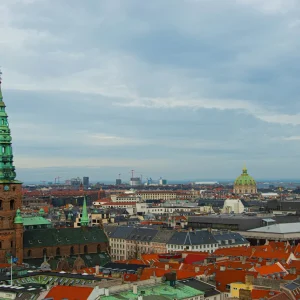Some parks were created for the rich, some parks were created for the poor, but Brent’s Welsh Harp Open Space is different: it was created for THE CANAL. Why that should be the case may not immediately be obvious from a map, the Welsh Harp reservoir that gives the green space sits in the middle of the River Brent, which is notably not a canal – but if you look closely at where the river leaves the reservoir, there’s a thin blue strip labelled Canal Feeder.
By the early 19th century Britain’s canal network was growing so quickly that they’d actually run out of water to fill it – well, at least in Camden, where the level of the Regent’s Canal kept dropping below what was actually necessary for e.g. a boat. There was only one thing for it: dam the river Brent and flood a farm in Hendon. The resulting reservoir could then be used to top up the canal, and no more boats would have to risk the unenviable fate of getting trapped outside Camden Market.
When the reservoir was created in 1834, it was actually significantly bigger – a return to that level today would see it flood Brent Cross Shopping Centre, which is certainly an interesting idea to consider if you’ve ever been to Brent Cross Shopping Centre. Back in the 19th century, the most significant bit of local commerce was, inevitably, a pub – the new Kingsbury Reservoir (as it was then) had an inn called The Harp on its shoreline.
This eventually became known as The Welsh Harp – it’s not entirely clear whether the reservoir gained its unofficial name (from which the green bit above it in turn gained its official name) from the pub, or vice versa. It’s occasionally claimed that the name stems from the reservoir looking a bit like a Welsh Harp from above, which I guess it sort of does if you squint while really, really wanting it to look like a Welsh Harp for some reason. But the existence of loads of other pubs called The Welsh Harp that aren’t next to plausibly-shaped reservoirs would seem to be a point against it.
Anyway, what is true is that the pub was what made the shores of the reservoir a visitor attraction – in the 1850s a bloke called William Perkins Warner returned from fighting the Crimean War to buy The Welsh Harp AND the reservoir’s fishing rights, which at least suggests that Drunk Fishing may have been a more popular Victorian sport than is mostly supposed. Other sporting attractions on offer included: shooting at birds, racing greyhounds and boxing (humans, presumably). The inn itself incorporated a music hall, and at one point a menagerie containing at least one bear, except in 1871, when it escaped (they should bring that back to liven up All Bar Ones).
Popularity waned as London suburbia took hold of the area and people’s option for a fun day out had broadened enough that Hendon was no longer near the top of anyone’s list. But as the 20th century rolled around other activities were offered, at least if you were in the army: testing a brilliant new World War I invention called “the tank”, for one. And, then, after the war: nudism!
From 1921 the area around the reservoir was a regular haunt for members of various exciting new naturist organisations along the lines of the “The Sun Ray Club”. The club’s founder Captain HH Vincent was a fierce advocate for nude sunbathing and had made bold threats of 2,000 strong marches of naked protesters through Hyde Park; in the event it appears the reality of this was him getting arrested for taking his top off, one time, but still.
The relatively secluded fields around the reservoir proved to be safer ground until June 1930, when locals lost their minds over the fact that nude and semi-nude men and women had been spotted NEAR EACH OTHER and there was a small riot, the end result of which was the nudists buggering off to St Albans to leave the residents of London to be angry and confused about something else instead.
The Welsh Harp pub was demolished to make way for the M1, but much of the immediate area around the reservoir has managed to survive various development plans. There was a persistent attempt to build a cemetery on the north western side – they even got as far as building a chapel and some nearby allotments are apparently theoretically on ground which was consecrated and no-one had got around to de-consecrating. The attempts to prevent the creation of the cemetery led to the 1965 designation of much of the area north of the reservoir as the imaginatively named Welsh Harp Open Space, which persists today as a bit of a slightly unloved bit of greenery, but one where you can at least definitely count on being unmolested by the bears, the dead, or the nude.






